Civilization III: Conquests Civilization Showcase
Join us for an exclusive advance look at the new nations in the upcoming expansion pack for Civilization III.
The Civilizations of Conquests
Welcome to GameSpot's exclusive profiles of the new nations in Civilization III: Conquests. Over the next few weeks, we'll introduce you to the new civilizations that will enter the race for control of the world in the upcoming expansion pack, which will include not only new playable nations, but also all-new, era-specific campaigns, enhanced multiplayer play, and a huge number of new features and additions. For more information on the upcoming expansion, consult our previous coverage.
Showcase 1: The Byzantines
Showcase 2: The Dutch
Showcase 3: The Incans
Showcase 4: The Hittites
Showcase 5: The Mayans
Showcase 6: The Portuguese
Showcase 7: The Sumerians
The Byzantines
The Byzantine Empire was first known as the eastern Roman Empire, when Constantine I relocated the Roman capital from Rome to Constantinople and his successor Valentinian I made the division between Western and Eastern Empire official. When barbarians sacked Rome and defeated the western armies a century later, the Byzantine Empire was the final bulwark of Roman civilization to stand against the increasing pressure from European barbarians to the north and Persia in the east. Byzantine government was based largely on that of Rome, although unlike Roman emperors a Byzantine emperor was elected by a threefold vote of the senate, the people, and the army. To govern the empire, Byzantine emperors relied on a labyrinthine system of advisors, ministries, and offices--hence the pejorative "Byzantine" today, used to describe overly hierarchical and intrigue-prone systems.
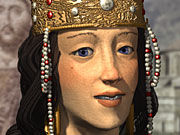
The golden age of Byzantium began when Justinian I and his brilliant wife Theodora became emperor and empress. Under their rule, the Byzantine general Belisarius undertook a series of dramatic and successful campaigns against the barbarian kingdoms that had risen in the ruins of Rome. After earning imperial favor by ruthlessly quashing a popular revolt, Belisarius successfully fought the Ostrogoths in Italy, the Persians, and various tribes in North Africa. His enormous popularity eventually caused Justinian to fear him, and he was eventually stripped of his command.
Byzantine military reform came mostly during the reign of Heraclius, the son of Africa's imperial governor. Arriving in Constantinople to restore order after a disastrous interregnum (marred by assassination, intrigue, and civil disorder), Heraclius placed tremendous power in the hands of the army. It was also during the reign of Heraclius that Greek fire, the medieval precursor to napalm, was invented, and used extensively by Byzantine ships called dromons in battle against Persian and barbarian ships. Heraclius also ordered the army to emulate the barbarian horse archers previously employed as mercenaries; the result was the cataphract, a heavily armored cavalryman who could fight with bow, sword, or lance.
After two hundred years of defeats and erosion, during which Byzantium lost virtually all of its possessions south of Asia Minor, the ascension of Basil I to the imperial throne in 867 marked a turnaround in Byzantine military fortunes. Byzantine armies beat back the Arabs in the east and south, and despite several humiliating defeats at the hands of the Muslims, reasserted dominance over the eastern Mediterranean. Syria, along with the key city of Antioch, also came back to Byzantine control, along with Armenia and large parts of the Balkans. For 150 years, Byzantium enjoyed civil prosperity and military victory.
But new adversaries appeared where the old ones had fallen. In 1071, Byzantium suffered two catastrophic defeats--they lost their last toehold in Italy to the Normans, who had earlier sacked Constantinople during a crusade gone awry. In the east, the Ottomans broke Byzantine power in Asia Minor forever at Manzikert, and the once-dominant empire was reduced to a rump state comprising Constantinople, parts of the Balkans, and a few remaining provinces in western Turkey. The heart of it, though, was now ruled by the Turks. Nonetheless, during this time, art, religion, and philosophy flourished within the walls of Constantinople. It was as if the learned men of Byzantium were unaware of the threats lurking outside. Another fateful event, the Schism of 1054, finalized the separation between the Byzantine (Eastern) and Catholic (western) churches. This would lead to deep suspicion between the two churches, and western reluctance to assist Byzantium against the Turks years later.
Eventually Byzantium was forced to resort to bribery and compromise with the Turks and the new western powers that coveted its territory and former influence. In 1421, after a hundred years of coexistence with the Turks, the new sultan Murad II revoked all of the arrangements that had existed between the two empires. As a last resort, the Byzantine emperor begged Rome for help, but the Christian army sent to fight the Turks was utterly defeated. In 1453, the Turks assaulted Constantinople itself, and the walls that had stood for over a thousand years finally fell, marking the end of the Byzantine Empire.
In Civilization III: Conquests, the Byzantines are considered a seafaring and scientific civilization. They start the game with bronze working and alphabet and are able to build the dromon instead of the standard galley.
Unique Unit: The Dromon
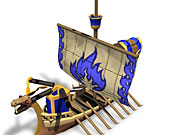
Byzantine dromons are a type of galley with an enhanced offensive capability, as it can let loose a hot stream of "Greek fire." The dromon has lethal sea bombardment. The dromon was the end result of Byzantine ingenuity applied to old Greek ship designs. Powered by rowers, its primary virtue was its versatility--the wide, flat decks could be mounted with a variety of weapons. There were many classes of dromon, from light escort and reconnaissance designs to heavy warships. Dromons often included mini-forts made of wood from which marines could sally forth or fire bows, as well as catapults, rams, ballistae, and later, Greek fire launchers. These dangerous and devastating primitive flamethrowers spelled death to enemies in an age where all ships were made of flammable wood and crew were constantly exposed on the upper decks.
Byzantine dromons are a type of Galley unit which enjoys enhanced offensive capabilities.
| Att. | Def. | Moves | Shield Cost | |
| Standard Galley | 1 | 1 | 3 | 30 |
| Byzantine Dromon | 2 | 1 | 3 | 30 |
The Dutch (Netherlands)
Toward the end of the 16th century CE, the independent cities and principalities of Flanders and Belgium sent representatives to Utrecht to form an alliance. The alliance would coordinate taxation and military operations against Spain, whose ruling Hapsburgs had dominion over the Low Countries even after they adopted the Protestant religion. The Netherlands, comparatively small and poor compared to mighty Spain and its empire of gold in the Americas, often had to rely on Swiss mercenaries and other hired guns for its defense. This was not a long-term solution, hence the need for a much closer alliance. The result of this meeting was the Union of Utrecht, which formally created the United Provinces of the Netherlands.

Spain, which had spent the previous decade alternately fighting and politicking against the armies and intrigues of William of Orange, was not pleased by this development. Orange's position had always been that Spain's sovereignty over the Netherlands was legitimate, but the governors chosen by the king were trampling the rights of Orange and the other native nobles. William also vehemently opposed the imposition of Catholicism on his homeland, but still felt the king of Spain could be persuaded to loosen his grip. This proved unrealistic, and in 1581 Orange publicly renounced his loyalty to the Spanish throne. He was assassinated a few years later; he did not live to see his country completely free of Spanish domination.
However, once the provincial leaders (particularly those of Holland, the largest and most influential of the United Provinces) and the nobles began to cooperate, putting their disagreements to one side, Spain was nearly defeated. Under the brilliant political, military, and economic leadership of Johan de Witt, perhaps the Netherlands' greatest statesman, the Dutch Republic grew into a world power, its rapidly growing economy and naval presence allowing it to settle colonies around the world and establish a massive trade empire. This wealth translated into a cultural golden age lasting over a hundred years.
During that time, Dutch thinkers made fundamental contributions to philosophy, law, science, and art. Hugo Grotius, a lawyer and philosopher, wrote "On the Law of War and Peace" in 1625--perhaps the first comprehensive analysis of international law. The philosopher Baruch Spinoza published substantial revisions of his mentor Rene Descartes' rationalist works, and also wrote a lengthy defense of freedom of conscience--which was promptly denounced as heresy by his contemporaries. In art, an obscure portrait painter named Rembrandt van Rijn rose to prominence (and disapproval) for his religious paintings and figure studies. Peter Paul Rubens, a great painter in his own right, also ran an immense school for artists, attracting dozens of talented painters from all over Europe to the Netherlands. The mathematician Christiaan Huygens developed his wave theory of light, which was a giant leap in the study of optics pioneered by Isaac Newton. And biology was made incomparably easier by Antonie van Leeuwenhoek's invention of the microscope.
After the Golden Age, the Netherlands retreated into the background, as the English fleet gradually achieved its supremacy. By the Napoleonic era, the Netherlands was once again dominated by its neighbors. In 1830, Belgium broke away from the United Provinces, in reaction to the restoration of the monarchy and the subordination of the Estates General, the council of stadtholders (provincial rulers). The Industrial Revolution came to the Netherlands as it did to the rest of continental Europe, and when World War I arrived, the Dutch remained neutral.
The Dutch were not so fortunate during World War II, as Hitler's armies invaded and imposed their brutish rule. (The diary of Anne Frank, a Jewish girl living in Amsterdam, is considered a classic portrait of innocence confronted with great evil.) Despite an unusually active and vigorous resistance to the Nazis--which was often met with brutal reprisals--a great many Dutch Jews died in the Nazi death camps. After the war, the former Dutch colonies followed the pattern of other European colonies at the time, with independence and nationalist movements breaking out everywhere. Dutch politics were still characterized by religious divisions even until the 1970s, appropriately given the nation's history, but a more conventional parliamentary party system arose. Today the Netherlands, a thoroughly modern European nation, is best known for its hosting of international institutions such as the International Criminal Court in The Hague.
In Civilization III: Conquests, the Dutch are considered to be a seafaring and agricultural civilization. They start the game with pottery and alphabet and build the Swiss mercenaries instead of standard pikeman.
Unique Unit: Swiss Mercenary
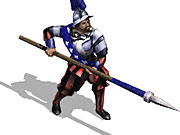
Mercenaries first came to prominence in Europe in the 14th century, when soldiers from the Hundred Years' War preferred to continue fighting for a living rather than learn peacetime trades. Swiss soldiers in particular enjoyed an especially high reputation for loyalty and professionalism, and several European nations incorporated Swiss mercenary regiments into their armies. The Netherlands, in particular, employed huge numbers of mercenaries, since the strength of the Dutch nation was commerce and wealth. This allowed Dutch princes and stadtholders to pay mercenaries well and regularly, which led to extremely effective fighters. The most famous assignment of Swiss mercenaries is the personal safety of the Pope; a special unit of Swiss soldiers, the Swiss Guard, has pledged to protect the Pope and the Vatican for the last 500 years.
The Dutch Swiss mercenary is an excellent defender that boasts an even better defense strength than the formidable pikeman. A Dutch city must have iron in its strategic resource box to build a Swiss mercenary.
| Att. | Def. | Moves | Shield Cost | |
| Standard Pikeman | 1 | 3 | 1 | 30 |
| Swiss Mercenary | 1 | 4 | 1 | 30 |
The Incans
Hundreds of years ago, a group of people calling themselves the Inca settled the Cuzco Valley high in the Andes Mountains of South America. Where they had come from was a mystery. Yet, though their purpose for settling such a rugged and inhospitable landscape was unclear, the end result of their arrival is without doubt. In time, the Inca built an empire that spanned the Pacific coast (as far south as Argentina and as far north as Ecuador), some 2,000 miles of hills, mountains, valleys and coastline. In just a short time, the Incan empire dominated South America and is, to this day, considered one of the finest empires the world has ever known.
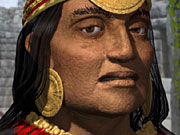
Beginning with the ninth ruler, Pachacuti Inca Yupanqui, the Inca began their expansion. Pachacuti won his first military campaign against the Chanca people, where he refused to retreat despite insurmountable odds. From there, he consolidated his control over his cultural base, Cuzco, and then moved north into the Urubamba Valley, which extended beyond the site where the lost city of Mach Picchu was later built. He then turned his army south and conquered the Colla and Lupaca tribes. Though not the first Incan ruler, Pachacuti was by many accounts one of the finest pre-Columbian persons that ever lived. A great military strategist, an architect, a skilled diplomat and a gifted religious philosopher, his teachings are still practiced by many Andeans today.
Like many other groups that preceded the Inca (the Chimu, the Nazca, the Moche), Incan society was heavily dipped in the worship of powerful gods. Their pantheon contained such lofty omnipotents as Viracocha (the god of creation), Inti (the sun and father of the Inca Dynasty), Illapa (god of rain, thunder, and lightening), Pacha Mama (mother of the earth), and Mama Cocha (mother of the lakes). Grand ceremonies were held frequently to honor these gods, for the Inca believed that if one did not give thanks and obedience to the gods, bad things would happen. The world of the Andes Mountains is full of ecological wonders [and] ecological disasters: Earthquakes, severe storms, and volcanic activity. The gods held sway with these events and thus the proper respect had to be paid at all times.
The Inca called their empire Tahuantinsuyu ("Land of the Four Quarters"), which was divided into four provinces. Each province was controlled by a local governor called the Apu; below him were the local rulers--the Curacas, and even lower still the district headsmen--the Camayoc. Through this governmental structure, the Sapa-Inca could rule the empire with impunity. Additional structures were also put in place, such as the Imperial road system, which was built along the steep inclines of mountains, interspersing bridges and stone walkways, stone steps and flat brick highways. To rule such a vast realm, the Sapa-Inca also needed constant information about the status of the far-flung reaches of the kingdom. To provide this information, the Inca formed the Chasqui Scout system. Chasquis delivered messages across the empire, relaying (by memory) important information from point to point. And in this way, a message about a peasant uprising hundreds of miles north of Cuzco could reach the king within a matter of days. Chasquis were also used by the army on campaigns to deliver messages between the moving columns. In addition, way-stations known as Tambos were constructed at strategic points along the roads, giving travelers and important dignitaries a place to rest and prepare for the next leg of their journey.
The Incan army was also well organized. When called upon to fight, each province would muster squadrons of men armed with maces, bows and arrows, slings, darts, and spears. During a battle, slingers would let fly a shower of rocks to soften the enemy lines. Then, archers would release their shafts, darts would fly, and then the shock troops would hit, in a torrent of screams and shouts meant to confuse and terrify the wavering opposition. Incan warfare was very successful. But nothing could prepare the empire for what was coming.
After the glorious rise of Pachacuti and his son, Topa Inca, the empire began to erode under a series of internal and external disasters. A bitter civil war between half-brothers Huascar and Atahuallpa stretched the empire to the breaking point. Atahuallpa won the war, quickly killed his half-brother, and declared himself king. But, in 1532 AD, Spanish Conquistadors, under the command of Francisco Pizarro, entered the Cajamarca Valley, brutally attacked Atahuallpa and his subjects, killing many and taking the Sapa-Inca hostage. Eventually, Pizarro killed Atahuallpa, pillaged the empire of its riches, and brought an end to the mighty Incan civilization.
In Civilization III: Conquests, the Incans are considered to be an expansionist and agricultural civilization. They start the game with pottery and masonry. They also begin the game with a regular scout and may build their unique chasqui scout units thereafter.
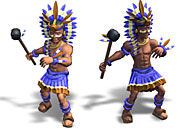
Unique Unit: The Chasqui Scout
The chasqui scout system was the Incan equivalent to the Pony Express. Fast, agile, and capable of running long distances, chasqui scouts carried memorized messages along the Imperial road systems of the Andes Mountains. Couriers donned with distinctly white feathered headdresses, chasquis would memorize information, carry it to other scouts waiting along the relay system, and then run along with them until they memorized the message, and so on until the message was delivered. In this way, a message could travel over hundreds of miles within a few short days. Chasqui scouts were also used by the Incan army on campaign, to retrieve and deliver messages between the moving columns. The Incan chasqui scout is a scout unit that replaces the basic scout for the Inca. He has a modest attack and defensive capability. He is also very fast and ignores movement costs for both hills and mountains.
| Att. | Def. | Moves | Shield Cost | |
| Standard Scout | 0 | 0 | 2 | 10 |
| Chasqui Scout | 1 | 1 | 2 | 20 |
The Hittites
Compared to other great kingdoms of the Middle East, little is known of Hatti; and what is known is often derived from sources in other contemporary kingdoms such as Egypt. The Hatti, or Hittite, Empire was one of the great powers of Mesopotamia, rivaling Babylon and Egypt in military strength and influence. The first Hittites probably came from somewhere in the Caucasus or Russia, but settled in central Turkey and later in Syria, areas whose plentiful natural resources, particularly metals, would prove crucial to the power of Hatti. Early Hittite kings focused on consolidating their power in their chosen region, but Mursilis I proved more ambitious, opting to strike out and execute audacious raids against mighty Babylon. He had great success, and indeed was able to undermine and destroy the ruling Amorite dynasty in Babylon--the family from which most great Babylonian kings, including Hammurabi, came.
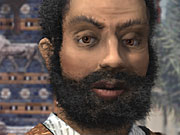
When Mursilis was assassinated, a bloody struggle for the kingship followed; the eventual victor, Telipinus, formed his own legal code which helped mitigate later power plays. After that, the Hittite Empire fought brief wars with its neighbors, until the time for a reckoning with Egypt came. The famed battle of Kadesh, in 1299 BC, is one of the most well-known Bronze Age battles. The Pharaoh Ramses II moved into Palestine with a large army of chariots and infantry, to be met by a Hittite force of equal size--composed partly of three-man chariots, a much larger variant of the first wheeled fighting vehicles, which permitted the riders to fight hand-to-hand as well as at a distance. The Hittites were able to surprise the Egyptians near dusk, and only a dramatic forced march by the Pharaoh's reserves prevented the total destruction of the Egyptian army. The Hittites were forced to retreat, but given the casualties they suffered, the Egyptians were unable to capitalize on the Hittite retreat and Ramses' overall objective, Egyptian control of Palestine and Syria, was not achieved.
The Hittites are also suspected by archaeologists to be the first smelters of iron. During Hittite primacy, around 1250 BC, the Iron Age began in Turkey, with the Hittites able to remove impurities from iron to finally produce a metal strong enough to use for weapons. The technique caught on very quickly, adding to the Hittites' already substantial wealth. They were not able to exploit this advantage for long, though, as the other regional kingdoms could not afford to allow Hatti a monopoly on iron weapons. The end of the Hittite Empire came around 1100 BC, when mass migrations from Europe and the Caucasus caused the Empire to dissolve into dozens of small, semi-autonomous city-states. These city-states, in turn, were easily absorbed by upstart Assyria, which itself would dominate the Middle East for centuries thereafter.
In Civilization III: Conquests, the Hittites are considered a expansionist and commercial civilization. They start the game with pottery and the alphabet, and build the three-Man chariot instead of the standard chariot.
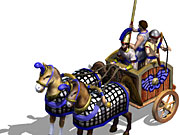
Unique Unit: Three-Man Chariot
The Hittites were perhaps most famous for waging fast, deadly warfare with their powerful heavy war chariots. The Three-Man Chariot was an improvement over other contemporary chariots in close combat, because it sacrificed speed for stability and "elbow room" with which to fight. At the battle of Kadesh, the Hittites utilized three-man chariots to closely engage the Egyptian forces--almost routing the entire Egyptian host. Hittite three-man chariots take the place of normal chariots. They move quickly and will withdraw from combat if they are losing (unless fighting another fast unit). Like other chariot units, they are wheeled and may not enter mountains, volcano, jungle, or marsh terrain unless following a road. A Hittite city must have horses in its strategic resources box to build a three-man chariot.
| Att. | Def. | Moves | Shield Cost | |
| Standard Chariot | 1 | 1 | 2 | 20 |
| Three-man Chariot | 2 | 2 | 2 | 30 |
The Mayans
The Mayan civilization of ancient Mesoamerica is shrouded in mystery. The Mayans developed their unique culture in one of the most inhospitable places on earth. The lowlands of northern Guatemala, western Honduras, Belize, and the Yucatan peninsula, are hot and humid, teeming with jungles boasting an annual average rainfall of 120 inches; and yet, these stalwart peoples toughed it out and forged a civilization that stands as a testament to the ingenuity and creativity of ancient man.
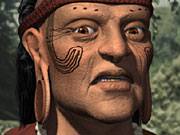
Where did the Mayans originate from? The earliest archeological evidence was discovered in and around Belize, and dates as far back as 1200 BC. Primitive tools and pottery, small religious figurines of animals and humans became abundant, and by 900 BC, small villages of one-room dwellings made of poles lashed together with henequen rope, began to appear. By 600 BC, the Maya were the dominant people in the region. Between 300 BC and 150 BC, Mayan villages grew into larger and more populous cities, ruled by powerful kings and noble families. It was during this so-called "Pre-Classic" period that Mayan society defined its cultural identity.
It was also during this time that the Mayans began to worship a pantheon of gods, including: Huabku (creator of the universe), Itzamna (creator of man); Ix Chel (goddess of childbirth), Chac (the rainmaker--an all-important god to the peasant class); Yam Kax (the young corn god), and Ah Much (the lord of death). As more and more gods were added to the pantheon, the rituals needed to glorify them also became quite elaborate, and thus, it was necessary to create a priest sect who would maintain these numerous ceremonies.
One of the most notable contributions from this priesthood was developed during the Pre-Classic period--the act of human sacrifice. Though the Mayans never practiced it quite as prominently as the Aztecs, these various acts of blood-letting became commonplace and ultimately essential to the Mayan way of life. Since Mayan kings ruled through semi-divine right, it was believed that their connection to the gods could be maintained only through regular ritual sacrifice. Thus, temples known as ziggurats (using a stair-step design) were constructed with sacrificial altars. On these altars were laid human offerings. Stone knives were produced and the bodies cut to let the blood flow. Then, with speed and determination, the chests were cut open and hearts ripped out. It was these ritual offerings that allowed Mayan kings and priests to hold absolute control over their subjects.
By 300 AD, the Mayan Classic period was in full bloom. It was the age of kings. Great rulers such as Smoke-Jaguar (or Smoke-Imix), Pacal, Eighteen Rabbits, and Blue-Quetzal Macaw, rose to power and ruled brilliantly over their lands. Mayan society was divided into city-states, each with its own king and a unique cultural center. During this Classic period, the political influence of various cities rose and fell, including: Chichen Itza, Palenque, Copan, and Tikal to name a few.
It was also during this Classical period that the Mayan military grew in organization and strength. The Mayan soldier carried knives and spears, clubs, bows and arrows, javelins, and even perfected the art of throwing hornets nests (called hornet bombs) into enemy troops to create confusion and panic. For defense, they used small shields made of jaguar skins. And Mayan generals called upon their priests to divine the gods and determine the best place and time to attack the enemy. It was through warfare that the Mayans collected slaves to sacrifice to their gods.
By 850-900 AD, Mayan culture began a decline that saw its ultimate dissolution. One city after another began to fade away into the jungle in this Post-Classic period, as the populations vanished. Where did the Mayans go? There is no consensus on this matter, but there are many theories. Environmental evidence suggests that a massive drought, hastened by volcanic activity and lasting for decades, hit the Yucatan Peninsula around this time. Another theory suggests that the peasantry, dissatisfied with their rulers, revolted. Yet another theory suggests disease ravaged the populations and destabilized the local economies. Whatever the reason, by 1100 AD, the last of the great Mayan cities were swallowed by the jungle, and there they lay fallow for centuries until wealth-seeking conquistadors and archeologists unearthed their wondrous remains and reintroduced the Mayan culture to the world.
In Civilization III: Conquests, the Mayans are considered to be agricultural and industrious. They begin the game with masonry and pottery and produce the javelin thrower instead of the archer.
Unique Unit: Javelin Thrower
The Mayan army was comprised of warriors armed with a variety of weapons: lances, clubs, daggers, and even tridents. When the Aztecs introduced them to the atl-atl (a tool used to extend the throwing range and penetration strength of a javelin) in the 9th century, the javelin thrower became a staple in the Mayan warrior class. Capable of launching spears in rapid succession, the javelin thrower is a powerful force on the battlefield. The primary purpose of war for the Mayans was not to kill the enemy, but to enslave him.
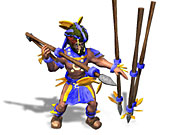
These Mayan javelin throwers hurl javelins in rapid succession, using the atl-atl. They are strong on both offense and on the defense and possess the ability to "enslave" other units. Additionally, when the javelin thrower wins a battle, there is a one-in-three chance that the defeated unit will be enslaved and immediately turned into a worker, which then becomes the property of the Mayan player.
| Att. | Def. | Moves | Shield Cost | |
| Standard Archer | 2 | 1 | 1 | 20 |
| Javelin Thrower | 2 | 2 | 1 | 30 |
The Portuguese
In 1139 CE, Afonse Henriques, appointed count of the province of Portugal by the king of Castile, defeated a Muslim army at Ourique. Impolitely, he took that opportunity to declare Portugal independent of Castile, with himself as king of the new country. He was able to get away with it largely due to the recognition by the Christian kingdoms of Spain that the Muslims were the common enemy, and when assured that Portugal would still play an active role in the impending Reconquista, Castile-Navarre and Aragon were willing to overlook Henriques' impudence. Two hundred years later, once the Muslims were confined to their tiny corner of Spain in Granada, Castile saw fit to repossess the Portuguese kingdom. When the Castilian army was soundly thrashed in battle by the warrior king John of Aviz, it was clear to all that Portugal was here to stay.
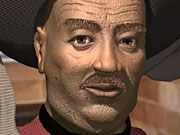
After the victory over Castile and the collective re-conquest of Iberia from the Muslims, Portugal looked overseas to continue its expansion. King John led a campaign against Ceuta in North Africa (modern-day Morocco). The ease of Ceuta's conquest caught the attention of his third son, Prince Henry the Navigator. Henry's older brother Duarte succeeded to the throne after John's death, and the two were often at odds, with Duarte skeptical and suspicious of Henry's ambitions to explore new lands and convert the natives to Christianity. For the next twenty years Henry sponsored expeditions to western Africa, and even led a campaign to invade Tangiers in 1437 (which ended in defeat). But on the whole Henry's personal seafaring experience was limited; his sobriquet comes from his patronage of other adventurers and the resulting age of discovery and colonization that they inaugurated with his support.
Portuguese explorers continued their discoveries after Henry's death in 1460. The greatest was Bartolomeu Dias, whose 1488 voyage around the southern coast of Africa made Europe aware of the Indian Ocean and a shorter route to India than the one Columbus gambled on just four years later. Dias also traveled across the western Atlantic to Brazil; on that voyage he was lost at sea in 1498.
Closely following Dias was Vasco da Gama, who took Dias' maps and went beyond their limits, landing in India in 1497. He made three trips to India over the following thirty years, the last of which took place in 1524 after his appointment by the King as viceroy of India. He did not live long after his arrival; some speculate he was poisoned by corrupt administrators who feared punishment at his hands.
In 1543, Portuguese sailors were shipwrecked in Japan. They did not stay long, but left behind the technique of musket-making--in that way, a handful of men changed Japanese history forever, as the samurai era was drowned out by the sound of musket fire. By that time Portugal's overseas holdings were vast, comprising holdings all over Africa, India, China, Macao, and South America.
In 1580 Spain awoke, flexing its muscles as the world's pre-eminent power. It took the opportunity to occupy Portugal, and for almost 100 years the two countries were united. The Portuguese royalty did not give up, though, and through clever diplomacy and alliance with England they were able to restore their monarchy and, with Spain greatly weakened and demoralized by the Thirty Years' War, finally forced Spanish recognition of Portuguese independence. Portugal remained an influential and wealthy European power through the Napoleonic Wars, when its alliance with Britain gave the British a foothold on the continent to oppose Napoleon's armies.
Portugal's prosperity lasted until the 1890s, when a combination of inflation and sluggish industrialization undermined its industries. Dissatisfaction with the monarchy led to a coup and the establishment of a republic in 1910; this did not last long, as radical groups pursued extreme agendas and unrest grew. In 1926, the army bloodlessly overthrew the republic; the junta asked a university professor and occasional member of parliament named Antonio Oliviera de Salazar to assume control of all economic policy. Six years later, Salazar became prime minister, a limited office in theory but dictator in practice. Salazar's new constitution formalized his powers and he ruled Portugal with absolute authority for nearly 40 years.
In 1968 Salazar suffered a stroke; his ministers tried to continue the dictatorship but in 1974 a democratic revolution re-installed a republican form of government. After narrowly avoiding a Communist coup, Portugal flourished, although it presently faces structural problems similar to those of its nearest European neighbors.
In Civilization III: Conquests, the Portuguese are considered expansionist and seafaring. They start the game with pottery and alphabet and build carracks instead of caravels.
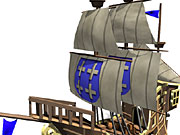
Unique Unit: The Carrack
When Viking longships encountered Mediterranean trading galleys, enterprising shipbuilders combined the two designs. The result was the carrack, a sturdy, square-rigged ship with three masts that retained the longships' sturdy construction and the Mediterranean trade-ships maneuverability. This combination allowed carracks to foray into waters never before seen by European eyes--and also allowed them to carry back goods and maps from faraway lands.
The Portuguese carrack is a sea-going vessel that may safely traverse coastal and sea terrain squares. Unlike a caravel unit, however, if a carrack ends its turn in an ocean square, it will not sink. The carrack also benefits from a higher offensive value than the standard caravel.
| Att. | Def. | Moves | Shield Cost | |
| Standard Caravel | 1 | 2 | 4 | 40 |
| Carrack | 2 | 2 | 4 | 40 |
The Sumerians
The Sumerians were, by historical consensus, the first human civilization. Originally from Asia Minor, they settled between the Tigris and Euphrates (in modern-day Iraq) and began to farm and create simple goods. They relied on a sort of theocratic city-state government, where each Sumerian city worshipped a separate god and had a separate governor, although all paid tribute to a single King in the capital, Ur.
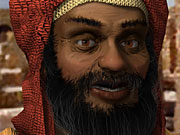
Sumeria's first and greatest accomplishment was the extent to which its people controlled their environment. They drained swamps, dug canals, and generally bent the Euphrates region to their needs. They plowed the land for the first time in history, and took advantage of the rich, fertile Mesopotamian soil. However, the area was low on other resources, so the Sumerian city-states were forced to import goods (particularly metals). Thus they had to create a barter system of trade, as well as riverboats to more easily traverse the rivers that flanked their home. The invention of the plow led in turn to the invention of the wheel, which permitted animals to pull carts as well as plow fields, and also to the creation of better pottery (with potters' wheels).
Since specialists were now able to create goods, and not every man had to farm, full-time priests could administer community affairs as well as the temples in each city. To support them, in turn, people had time to devise picture signs and other very early alphabets, and being a full-time scribe became a viable profession. The literature of Sumeria followed thereafter, culminating in the Epic of Gilgamesh, a lengthy poem dedicated to the mythic god-king whose real and legendary exploits blend together. A companion of Gilgamesh, Enkidu fought by Gilgamesh's side in many battles, and for him the enkidu warriors are named: fierce fighters who sought to defend Sumerian lands from the other civilizations being born nearby.
The Sumerian priesthood also developed an early system of mathematics for commercial and religious purposes, and their numeric system was based around the number 60. Thus, time is divided into units of 60 seconds per minute, 60 minutes per hour, and so forth. The 24-hour day also originates from Sumerian calendars, as does the concept of a 360-degree circle. Considering such facts, it is clear that the fingerprints of the world's most ancient civilization are still visible, even today.
The Sumerians' end came gradually, as barbarians witnessed what they had achieved and strove to emulate it. Approximately 1,500 years after the first Sumerian cities took root, Amorite nomads settled near Ur in a place called Babylon. The resulting civilization grew into a mighty kingdom in its own right, and when Elamite invaders (from modern-day Iran) sacked Ur, Babylon saw its opportunity to eclipse its neighbor. They went in, disposed of the Elamites, and rebuilt Ur in their own image. Sumerian culture and language persisted, but was eventually assimilated into the new, dominant empire. As a result, the Sumerians disappeared completely as an autonomous culture by 1900 BC.
In Civilization III: Conquests, the Sumerians are considered to be a scientific and agricultural civilization. They start the game with bronze working and pottery and build enkidu warriors instead of standard warriors. They are not permitted to build spearmen.
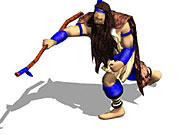
Unique Unit: Enkidu Warrior
The enkidu warrior is named for Enkidu, a near-savage man created by the Sumerian god Anu to accompany and aid Gilgamesh on his quest for immortality. Enkidu was a fierce warrior and prophet, and the Sumerian armies strove to emulate his ferocity in battle and his iron loyalty to the king.
The Sumerian enkidu warrior is a very tough, early defensive unit.
| Att. | Def. | Moves | Shield Cost | |
| Standard Warrior | 1 | 1 | 1 | 10 |
| Enkidu Warrior | 1 | 2 | 1 | 10 |
This brings our showcase of the new civilizations in Civilization III: Conquests to a close. We hope that you enjoyed the showcase as much as we enjoyed bringing them to you. The second expansion pack for Firaxis' popular strategy game is scheduled for release in early November. For more information on the game, please consult our previous coverage.
Got a news tip or want to contact us directly? Email news@gamespot.com
Join the conversation